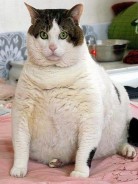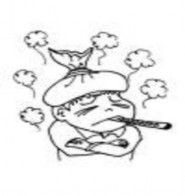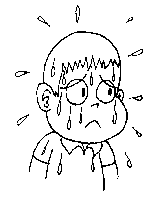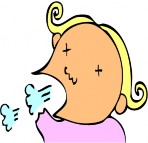Exercise 1: Read the text above carefully and decide what the following statements describe. Write A (aetiology), E (epidemiology), D (diagnosis), PC (prevention & control).
1. Emesis (occasional).
2. Live pigs and fresh and cured pig meat must be controlled strictly before importing.
3. Many countries are absent of this disease.
4. Termination of pregnancy before term.
5. Classification of the causative agent.
6. Lymph nodes kept under fridge and sent to laboratory as quickly as possible.
7. Pigs are fed waste food which it isn’t well done.
8. Button ulcers in the caecum and large intestine.
9. On affected farms, pigs must be slaughtered.
10. Survive some forms of meat processing.
11. Pigs and wild boar are the only natural source of hog cholera virus.
12. Short fever and anorexia.
Exercise 2: Answer the following questions.
1. Where does the disease occur?
2. How long is incubation period?
3. How long does the death occur after onset of illness?
4. How many percents can mortality approach in young pigs?
5. How does this disease spread?
6. How long is swine dullness, capricious appetite, pyrexia, diarrhoea?
7. Which disease did constipation follow by?
8. Can this disease treat? What should we do with affected pigs?
Exercise 3:Work in groups. Translate the text about Classical Swine Fever (Hog Cholera) into Vietnamese.
3. Further Practice
Exercise 1: Match the words in column A with their synonyms in column B.
B | |
1. diarrhoea 2. herd 3. slaughter 4. survived 5. chemicals 6. reservoir 7. approach 8. lymph nodes | A. cistern. B. lymph gland. C. looseness of the bowels. D. arrive, come to. E. flock. F. continue, remain. G. butchering H. chemistry. |
Có thể bạn quan tâm!
-
 Reading: Read The Following Text And Do The Exercises That Follow.
Reading: Read The Following Text And Do The Exercises That Follow. -
 Reading: Read The Following Words And Do The Exercise That Follow.
Reading: Read The Following Words And Do The Exercise That Follow. -
 Vocabulary: Translate The Following Words Into Vietnamese And Learn By Heart Them.
Vocabulary: Translate The Following Words Into Vietnamese And Learn By Heart Them. -
 Giáo trình Anh văn chuyên ngành dùng chung Nghề Dịch vụ thú y và chăn nuôi - Cao đẳng - Trường Cao đẳng Cộng đồng Đồng Tháp - 8
Giáo trình Anh văn chuyên ngành dùng chung Nghề Dịch vụ thú y và chăn nuôi - Cao đẳng - Trường Cao đẳng Cộng đồng Đồng Tháp - 8 -
 Giáo trình Anh văn chuyên ngành dùng chung Nghề Dịch vụ thú y và chăn nuôi - Cao đẳng - Trường Cao đẳng Cộng đồng Đồng Tháp - 9
Giáo trình Anh văn chuyên ngành dùng chung Nghề Dịch vụ thú y và chăn nuôi - Cao đẳng - Trường Cao đẳng Cộng đồng Đồng Tháp - 9
Xem toàn bộ 75 trang tài liệu này.
Exercise 2: Complete each sentence with the words in the box.
diarrhoea
chemicals
herd
reservoir
slaughter
approach
survived
lymph nodes
1. As youthe town the first building you see is the church.
2.pigs by humane methods.
3. Many strange customs havefrom earlier times.
4. My dog has a bad attack of.
5. The show is a veritableof new talent.
6. Enlarged haemorrhagicare common.
7. The most dangerouswere stored in a special room in the back of the laboratory.
8. You will never see aof buffalo as big as a city.
Chapter 6
COMMON SIGNS IN SICK ANIMALS MH38 - 06
Objective:
By the end of the Chapter, learners are able to
In this Chapter
Learn about some specialized vocabularies of Common
Signs in Sick Animals.
1. Vocabulary: Translate the following words into Vietnamese and learn by heart them.
Abasia astasia (n)= inability to walk : Ache (n,v) = continuous pain :
Anorexia (n)= lack or loss of appetite for food:
Apathy (n)= failure to respond emotionally to external stimuli: Astasia (n)= motor incoordination withinability to stand: Blindness (n)= lack or loss of ability to see:
Coma (n)= a state of unconsciousness from which the patient can’t be arounsed, even by powerful stimuli:
Cough (n,v)= barking, hard paroxysmal, moist nonproductive, moist rales, cracking sound:
Deafness (n) :
Diarrhea (n) :
Drag (n,v) :
Drool (v) :
Edema (Oedema) (n) :
Emaciation (n) :
Eructation (n) :
Gasp (n,v) :
Inanition (n) :
Lameness (n) :
Nausea (n) :
Obese (adj)=fat (adj) :
Sneeze (n,v) :
Fever (n,v) :
Grunt (n,v) :
Pain (n,v) :
Runt (n) :
Vomit (v) :
2. Reading: Read the following words and do the exercise that follow.
COMMON SIGNS IN SICK ANIMALS
Abortion: sảy thai; termination of pregnancy before term
Abrade: phồng da
Abrasion: trầy xướt da; a wound caused by rubbing or scraping the skin or mucous membrane
Abscess: ổ mủ; a localized collection of pus in a cavity formed by disintegration of tissue.
Alert: lanh lẹ, nhạy bén.
Anaemia: thiếu máu; a reduction below normal in the number or volumn of red blood cells or in the quantity of haemoglobin in the blood.
Animation: sự linh hoạt; the quality of being full of life
Anesthesia: sự tê; loss of feeling or sensation
Aphagia: chứng không chịu ăn; abstension from eating Apnea: ngừng thở; temporary cessation of breathing Aquaphobia: chứng sợ nước
Ascite: cổ trướng; abnormal accumulation of oedematous fluid within the peritoneal cavity.
Asphysia: thiếu oxy; a condition due to lack of oxygen in inspire air.
Ataxia: mất điều vận; failure to muscular coordination
Blister: mụn nước; a vesicle of the skin
Bloated: phồng lên,sưng lên, chướng hơi; tympany of the rumen, abomasum, stomach, caecum…
Bradycardia: chứng tim đập chậm; slowness of the heart beat
Breathing: cách thở (open-mouth, grunting noise produced, laboured, honking, wheezing)
Bruise: (contusion) vết bầm; superficial discoloration due to haemorrhage from ruptured blood vessels beneath the skin surface, without the skin being broken.
Cachexia=(emaciation) suy nhược; a profound and marked state of constitutional disorder due to ill or malnutrition.
Cancrum: loét, hoại thư Carbundle: nhọt độc
Cataracts: lòa; opacity of the lens of the eyes or its capsule.
Chill: lạnh run
Chomp: nhai hoặc cắn cái gì gây ra tiếng động
CNS sign (central nervous system): triệu chứng thần kinh Contortion: sự trật khớp
Convulsion: sự co giật Cornification: sự sừng hóa Cyanosis: chứng tím tái
Debilitation: sự suy nhược Defecation: sự thải phân Dehydration: sự mất nước Diasarthrosis: chứng dị dạng khớp
Discharge: tiết dịch (ocular, nasal, vulval, vaginal) Disphagia: chứng khó nuốt
Displacement: sự sai chỗ
Distonia: chứng loạn trương lực cơ (dystonia) Distress: sự suy sụp
Drafty: lạnh lẽo Droop: rủ xuống
Drowsy: cảm giác buồn ngủ Dullness: sự buồn tẻ, chán nản Dyspnea: chứng khó thở
Emesis: nôn, mửa Emetic: chất gây nôn Emphysema: sự tích khí Engorged: căng cứ
Fatigue: mệt nhoài Febrile: sốt
Gait: dáng đi (huddling, weaving, staggering, stiff, stilted) Gaunt: gầy vì đói hay vì bệnh
Hematuria: nước tiểu có máu Hernia: sự thoát vị Hyperesthesia: chứng tăng cảm Hyperpnea: thở nhanh và sâu
Hyperirritability: chứng tăng nhạy cảm với kích thích Hyperthermia: chứng tăng nhiệt
Hypothermia: chứng hạ nhiệt
Illthrift: sự chậm lớn
Inappetence: sự không thèm, sự không muốn Incoordination: sự mất phối hợp hoạt động
Jaundice: chứng hoàng đản
Lethargy: trạng thái bơ phờ Lordosis: chứng ưỡn cột sống
Malaise: tình trạng khó chịu trong người Nictitation: chứng co giật mí mắt Opacity: sự mờ đục
Pallor: xanh xao
Pant: thở nhanh và khó Paralysis: bại liệt
Prolapse: sa xuống khỏi vị trí bình thường Prostration: sự mệt nhoài
Recumbency: sự nằm (sternal, lateral) Regurgitate: ợ, ói
Scaling: đóng vảy Scratching: sự trầy xước Spasm: chứng co thắt Stiffness: sự cứng ngắc Stunt: còi cọc
Sweating: đổ mồ hôi
Ulceration: sự loét Unthriftiness=illthrift: sự chậm lớn
Tilt: đi nghiên ngã Tremor: run rẫy
Wart: nốt sần Weak: yếu ớt
Exercise: Match the words in column A with their definitions in column B.
B | |
1. pain 2. cough 3. wart | A. inability to walk. B. exude sweat. C. low guttural sound made by a pig. |
D. loss of feeling or sensation. E. lack or loss of ability to see. F. condition of respiratory organs causing coughing. G. small hard round growth on the skin. H. a vesicle of the skin. I. slobber, dribble. J. any unpleasant bodily sensation produced by illness, accident …etc. K. smallest pig etc, in a litter. L. wholly or partly unable to hear. |
4. drool
3. Further Practice
Exercise 1: Look at the pictures and write the correct words.



1.
2.
3.



4.
5.
6.





